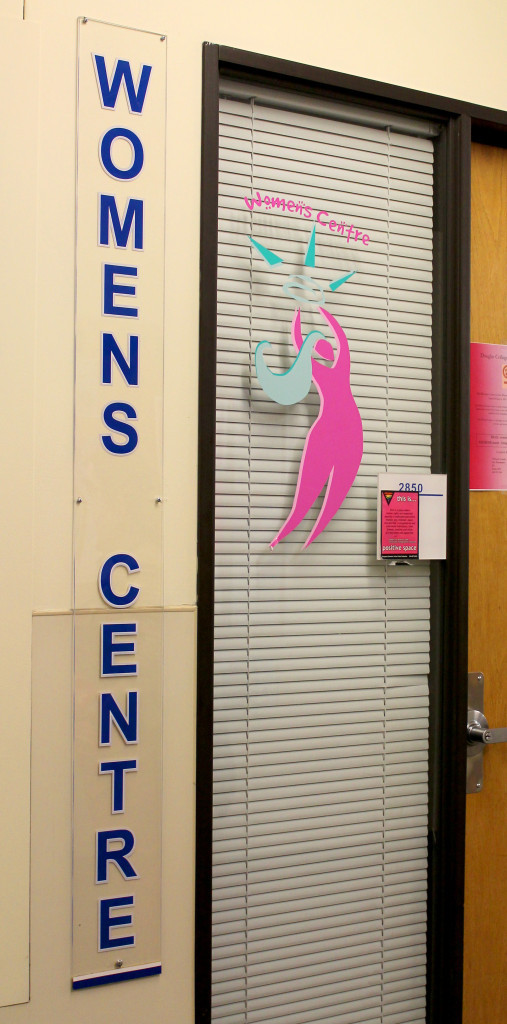Forty volumes of student journalism at Douglas College
By Jacey Gibb, Editor-in-chief
Writing an appropriate opening to this Feature has been daunting.
A brief history of 40 volumes worth of the Other Press? Should I assume you’re someone who’s never enjoyed our paper before? Can I dive into the paper’s lore and expect you’ll know everything I’m referring to? History is something I’ve grown to appreciate as I’ve gained more of it myself. Without documentation, those things called memories can dissolve into blips in our cranial databanks.
The Other Press has been a mainstay at Douglas College since 1976, over time producing 39 volumes. As of this issue’s printing, we’re now in Volume 40. Didn’t know Douglas College has a newspaper? We’re a relatively large publication compared to other college/university newspapers, with a core staff of 16 people and a collective of dedicated contributors, made up almost exclusively of Douglas students and alumni. We publish weekly during the fall and winter semesters, monthly during the summer, and we’re open 24/7 over at theotherpress.ca.
To commemorate this literary milestone of 39 volumes past, I decided to round up some Other Press history and compile it into one digestible word count. We’ve got some insight into how the paper first came to fruition in ’76, a look at how the content has changed since then (spoilers: a lot), and there are even some words from Other Press graduates.
A healthy alternative since ‘76
Let’s start this memory-train off in 1976, when the Other Press made its official debut as the second newspaper at Douglas College.
An article by Terry Glavin in the 20-year anniversary issue of the Other Press tells the story of how a small group of hopeful writers gathered for an all-nighter to construct the premiere issue. “All we knew is that some of us knew how to write, and some of us knew how to use a camera, and when it came down to it that’s what we wanted to do.” Most of them were in Douglas’ then-journalism program and were dissatisfied with the college newspaper, the Pinion, which “appeared maybe once or twice a semester.”
One night, the group of rogue writers asked the program head/then-editor of the Pinion, Charlie Giordano, if they could use the newspaper’s production equipment. He gave the go-ahead and then left for the night. When Giordano came back the next morning, Glavin and company were still there, putting the final touches on what became the first issue of the Other Press. The team then pooled their money and trekked out to Hacker Press in Abbotsford for the official printing.
Where did the paper’s name come from? Even Glavin couldn’t recall. “We hadn’t quite decided what to call the thing. All we knew for certain was that we wanted to produce something other than the Pinion. So the name fell to the Other Press.”
Fashion and other funny business
In our office at the New Westminster campus, you’ll find a bookshelf lined with blue yearbooks of Other Press volumes past. The oldest, from ’77, contains Volumes Four and Five.
Structurally, the paper is unrecognizable from what it once was. Separate sections didn’t even make their debut until the third issue of Volume Four and were limited to Letters, Arts, and Sports, though campus content and opinions pieces existed without mastheads. Makes the current setup look pretty sweet, right?
You wouldn’t know by looking at it, but a tent pole section of the Other Press, Life & Style, is relatively new—at least in relation to the paper overall.
Originally pitched in 2010 as the Fashion half-section by then-Contributor Stephanie Trembath, the section was meant to help fill the gaps between Arts and Opinions, where topics like designer trends and style pieces could find a home. By the next semester, Fashion had become a full section and eventually underwent a name change to Life & Style, adding things like recipes and a recurring sex column.
“The Life & Style section is a constant reminder that you have to have confidence in your ideas,” says Trembath, on how it felt to be a pioneer for the Other Press. “If you’re passionate about something, it will resonate in your work.”
You know that Humour section you like so much? The one at the back of the newspaper? The final pages of the Other Press didn’t use to be so funny, as it wasn’t until 2005 that the first signs of a Humour section began to manifest, initially as the “WTF” section. These two pages included a column called “I heart Spam,” where the Managing Editor would write replies to spam emails, and “Last Call,” an advice column. Maybe the second part isn’t exactly humorous, but within the year, a comics page was added.
The Humour section you know and love came in 2011 from former Editor-in-chief, Liam Britten. In the November 22 issue, Britten provided a quote for the Lettitor, introducing the new section in a signature satire-style: “I am thrilled to be at the helm of the Humour section. I feel Humour is one of, if not the most important sections in the paper, so all the other section editors can shove it. I’m dedicated to news. Hard news. I will look under every stone, at the bottom of every beer glass, and in every strip club back room to find the truth. I don’t believe in journalistic bias, because bias is just another word for racism. And racism is bad; even a Swedish person knows that. So read Humour. It’s got the good stuff.”
The Other Highlights
While my initial goal was to focus on the newspaper’s creative history and evolution as a publication, what would a throwback piece be without including some previous staff’s antics?
In the same anniversary piece mentioned before, Glavin recalls an “incident” where one of the staffers took a chainsaw to the office wall in an attempt to increase the room’s total square feet. “I don’t know what was going through the mind of the principal, George Wootten, when he came by to talk to us about the incident and could barely make out the people in our new office from the thick blue haze of marijuana smoke.” In their defence, this was the ‘70s—and who doesn’t like more square footage?
While I’m certainly more liberal with my language than some Editors before me, the occasional f-bomb in my article pales in comparison to what former Editor Tim Crumley did during one late-night production session: “We were reading the masthead, which is essentially a list of credits saying who did what in the paper. We were trying to proof it for typos and such, when we realized that there was a credit given to the readers of the paper. It simply said ‘Readers…You.’ We flipped. We went berserk. If the readers of the paper didn’t know they were the readers of the paper, they must be idiots. No, they must be fuckheads. So there it was, the next day. ‘Readers…You, fuckhead.’ We got more mail about that than any article we printed that year. Hmm.”
Other gems from the Other Press’ past that came up during my research include: the time Britten wrote a serious movie review of a porno; when an article written about how feminism provides easier sex caused women’s groups around campus to vandalize newspaper stands and tack a copy to the office door with “This is what sexism looks like” across the cover; and when Trevor Hargreaves, along with several others, hatched a plan to rename “the Western regional conference the ‘Further Upper Canada Canadian University Press’ conference.” In 2006, the FUCCUP conference was held—an event that remains immortalized on Urban Dictionary under the definition for “FUCCUP.”
An-Other 40 volumes
Depending on whom you ask, four years can be a long time.
As I mentioned before, we have a series of “yearbooks” from volumes past. A brief glance at the 2009 volume’s staff list reveals that not a single name can be found in the issue you’re reading now (with the exception of Angela Szczur, then Website Editor/IT extraordinaire and now Business Manager—and girl got married, so even her name’s different).
An almost 100 per cent staff turnover rate in four years may sound problematic, but I’m looking with my glass-half-full goggles. I see a publication that refuses to grow stale. I see a staff that comes to the paper to give it their creative-all and then get the heck out, leaving room for someone else to create their own vision.
Looking back at issues past, I feel confident in saying we’re living in an Other Press renaissance. Never before have the pages been as glossy or robust with great content. If 40 is the new 30, then it’s safe to say we’re just getting started.



